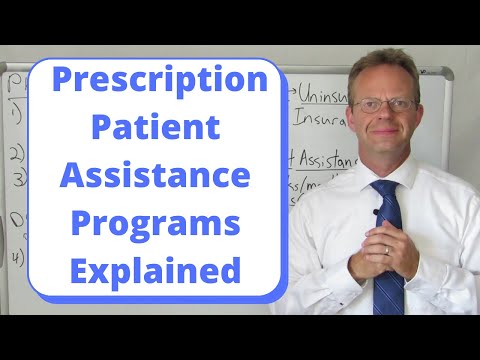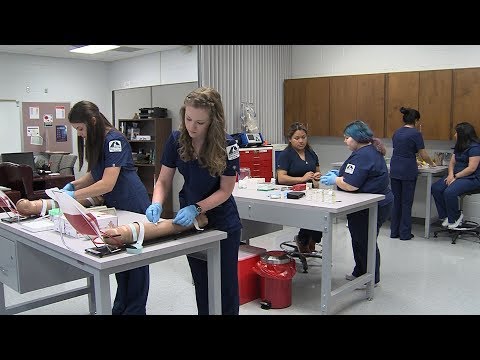Patient Medication Assistance Programs You May Qualify For
Contents
- What are patient medication assistance programs?
- Who is eligible for patient medication assistance programs?
- How do patient medication assistance programs work?
- What are the benefits of patient medication assistance programs?
- Are there any drawbacks to patient medication assistance programs?
- How can I find out if I am eligible for a patient medication assistance program?
- How do I apply for a patient medication assistance program?
- What happens after I am accepted into a patient medication assistance program?
- Are there any other resources I can turn to for help with my medications?
- Where can I find more information about patient medication assistance programs?
If you’re struggling to afford your medications, you may be eligible for assistance through a patient assistance program. Here’s a look at some of the programs that may be available to you.
Checkout this video:
What are patient medication assistance programs?
Patient medication assistance programs are designed to help patients with limited income and resources afford their medications. These programs are sponsored by pharmaceutical companies, nonprofit organizations, and state and local governments. Various factors are used to determine eligibility for assistance, such as household income, insurance status, and medication needs.
There are many different patient Medication Assistance programs available, so it is important to research the options to find the one that best meets your needs. Some programs provide financial assistance while others offer free or discounted medications. Some programs have strict eligibility requirements, while others are more flexible.
Below is a list of some of the more popular patient medication assistance programs:
-The Partnership for Prescription Assistance: This program provides access to over 475 public and private patient assistance programs, including more than 200 programs offered by pharmaceutical companies.
– RxAssist: This website provides a database of patient assistance program contact information for over 4,000 brand-name and generic medications.
– NeedyMeds: This website offers a database of over 2,000 patient assistance programs as well as other resources for people with limited income and resources.
– RxHope: This website provides a database of patient assistance program contact information for over 1,500 brand-name and generic medications.
Who is eligible for patient medication assistance programs?
There are many different patient medication assistance programs available to help those who cannot afford their prescriptions. Each program has its own eligibility requirements, but most programs are based on income and assets. Some programs also have age and residency requirements.
To see if you qualify for any patient medication assistance programs, you can contact your state’s Medicaid office or the Social Security Administration. You can also contact theMajor Pharmaceutical Companies’ Helplines, which can connect you with programs offered by major pharmaceutical companies.
How do patient medication assistance programs work?
Patient medication assistance programs help people who cannot afford the high cost of their medications. The programs are usually sponsored by pharmaceutical companies, but some are also sponsored by non-profit organizations. There are a variety of programs available, and each one has its own eligibility requirements.
To find out if you qualify for any patient medication assistance programs, you will need to contact the program directly. You will likely need to provide proof of income, as well as other documentation, such as a copy of your prescription. Once you are approved for the program, you will likely receive your medications at a reduced cost or even for free.
What are the benefits of patient medication assistance programs?
Patient medication assistance programs (MAPs) are charitable programs that help eligible patients with the cost of their medications. MAPs usually have income and other eligibility requirements, and patients must usually reapply for assistance each year. Some MAPs also offer additional services, such as disease education or help with finding a doctor or specialist.
MAPs can make a big difference for patients who struggle to afford their medications. The assistance they provide can help patients stay on their medications, which can improve their health and quality of life. In some cases, patient assistance programs may also help patients avoid medication errors or adverse drug events.
Are there any drawbacks to patient medication assistance programs?
There are a few things to keep in mind if you’re considering signing up for a patient Medication Assistance Program As these programs are usually run by pharmaceutical companies, there may be some restrictions on which medications are covered. Additionally, you may need to meet certain income requirements to qualify for assistance.
That being said, patient medication assistance programs can be a great way to get the medications you need at a lower cost. If you think you might qualify for assistance, be sure to check with the program guidelines to see if it’s the right fit for you.
How can I find out if I am eligible for a patient medication assistance program?
There are many patient medication assistance programs available to help those who cannot afford their medications. Some programs are run by pharmaceutical companies, while others are run by non-profit organizations or government agencies. To find out if you are eligible for any of these programs, you can:
-Check with your doctor or pharmacist. They may be aware of programs that you could qualify for.
-Contact the pharmaceutical company that manufactures your medication. They may have a patient assistance program that can help you pay for your medication.
-Search the internet for “patient assistance program” + your medication name. This should bring up a list of programs that you may be eligible for.
-Call your state’s Medicaid office. Medicaid is a government program that provides health insurance for low-income individuals and families. You may be able to get help with your medications through Medicaid
How do I apply for a patient medication assistance program?
There are many patient medication assistance programs available to help individuals afford their prescription medications. To see if you qualify for any of these programs, you will need to speak with your doctor or a representative from the program itself.
You can also find out if you qualify for any assistance programs by contacting your insurance company or the manufacturer of your prescription medications. Many times, these companies will have programs in place to help patients afford their medications.
If you are unable to afford your medications, there are also many non-profit organizations that may be able to help you. These organizations can provide you with information on assistance programs and help you apply for them.
What happens after I am accepted into a patient medication assistance program?
After you are accepted into a patient medication assistance program, you will be assigned a case worker who will help you understand the program requirements and the process for getting your medications. You will also be given information about other assistance programs that you may qualify for.
Are there any other resources I can turn to for help with my medications?
There are a number of options available to help patients who are struggling to pay for their medications. Many pharmaceutical companies offer patient assistance programs (PAPs) that provide free or discounted medications to low-income, uninsured, or under-insured patients. To see if you qualify for any drug assistance programs, contact the drug manufacturer or visit www.pparx.org.
In addition to PAPs, there are a number of state and federal programs that can help patients pay for their medications. The Low Income Home Energy Assistance Program (LIHEAP) provides financial assistance to low-income households to help pay for energy services, including heating and cooling costs. LIHEAP can also help pay for weatherization services and emergency energy services such as repairs or replacement of critical home heating and cooling equipment. To see if you qualify for LIHEAP, contact your state’s LIHEAP office or visit www.liheap 411 .org.
The Social Security Administration’s Extra Help program provides financial assistance to low-income Medicare recipients who are struggling to pay for their prescription drugs. To see if you qualify for Extra Help, visit www.socialsecurity.gov/extrahelp or call 1-800-772-1213 (TTY 1-800-325-0778).
Where can I find more information about patient medication assistance programs?
There are many organizations that offer assistance to patients who need help paying for their medications. Some pharmaceutical companies offer assistance programs for patients who are unable to pay for their medications, and there are also nonprofit organizations that offer assistance.
Patients can also look into government assistance programs, such as Medicaid or the Children’s health insurance Program (CHIP). These programs can help patients with the costs of some or all of their medications. Patients can also check with their local social services office or community health center to see if they offer any medication assistance programs.







